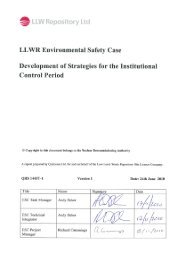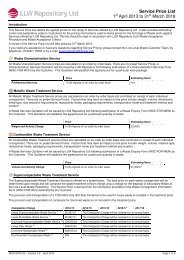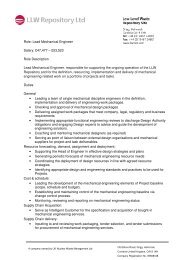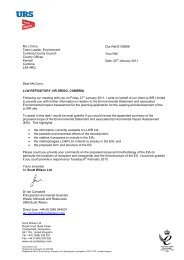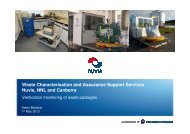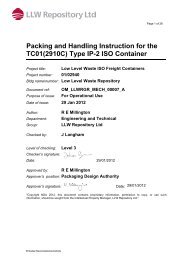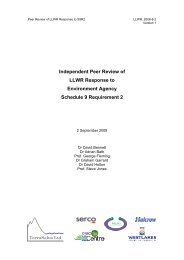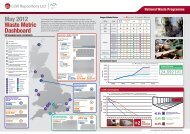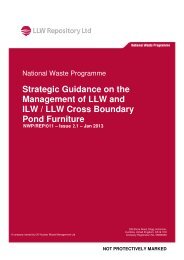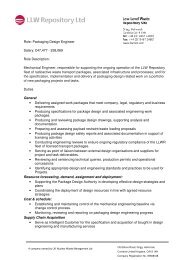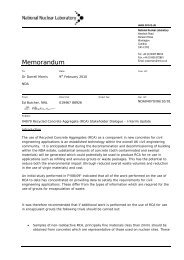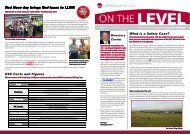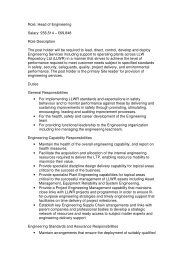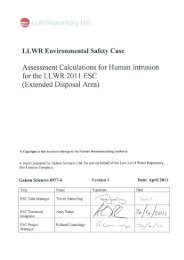Halcrow, Coastal Studies Forward Programme Data Compilation ...
Halcrow, Coastal Studies Forward Programme Data Compilation ...
Halcrow, Coastal Studies Forward Programme Data Compilation ...
You also want an ePaper? Increase the reach of your titles
YUMPU automatically turns print PDFs into web optimized ePapers that Google loves.
2.4.1 Regional scale sediment budgetAn assessment of the regional scale sediment budget, sources, sinks and transportpathways (<strong>Halcrow</strong> 2005b), covering the whole of Sediment Cell 11 from theSolway Firth to the River Dee, suggests that:Sufficient sediment is available from seabed sources to maintain thesediment budget of the <strong>Coastal</strong> system of cell 11Present-day transport processes are capable of moving sand from sourceto sink in areas south of Walney IslandSediment transport between St Bees and Walney is restricted due to tidalconditionsDespite abundant sediment sources and dynamic sediment transportpotential to the south, little sediment appears to enter sub-cell 11d(Cumbrian coast) due to entrapment in the Morecambe Bay sediment sinkSediment demand (i.e. that which is required to keep the estuary inequilibrium) in the Duddon and Esk, Irt, Mite estuaries that would beneeded to keep pace with future sea-level rise could only be met if surplussediment was available from Morecambe BaySea-level curves for Morecambe Bay suggest that sediment supply wassteady throughout the period 8,000 to 3,500 years BP. A slight decrease insea-level and thus sediment supply may have occurred between 3,500 and1,800 years BP but evidence is limited.Because sediment transport into Sub-cell 11d is limited and since sediment surpluswas not available for export to 11d throughout most of the Holocene, it is likelythat sediment stored within Sub-cell 11d was derived from within the sub-cell andnot from external sources. Therefore sediment stored in the Eskmeals and Driggspit and estuary mouth complexes appears to be derived from sources within thesub-cell which suggests that the boundary conditions for the study area system canbe defined at a local level.2.4.2 Local scale sediment budgetA review of available data was used to generate a preliminary sediment budgetwhich shows that local scale connectivity is dominated by sediment export(<strong>Halcrow</strong>, 2005b). The analysis shows that cliff and shore platform sedimentsources within the study area are likely to have been more than sufficient toaccount for the sediment now stored within the system. In addition, it seems likelythat this coast was a net exporter of large volumes of coarse sediment during theHolocene. During the period up to 2,500 years BP, the Cumbrian coast was likelyDoc No 1 Rev 2: Date: May 2010 16



